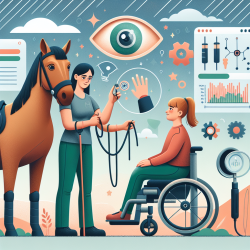As practitioners dedicated to improving children's lives, early detection of hearing loss is a crucial area of focus. According to a comprehensive study by Schade (2010), universal newborn hearing screening (UNHS) is pivotal for early diagnosis and intervention, leading to significantly better outcomes for children with hearing impairments. This blog will delve into the key findings of this research and provide actionable steps to enhance your practice.
Why Early Detection Matters
Hearing loss is the most common congenital sensory disorder, affecting approximately 1-2 out of 1,000 healthy newborns. For children at risk, this number can be as high as 1 in 50. Early detection is critical because the auditory pathway matures over the first four years of life. Delayed diagnosis can irreparably damage a child's linguistic, intellectual, and social development.
Key Findings from the Research
- Early diagnosis within the first three months of life is essential for initiating hearing aid support between 3-6 months.
- UNHS programs using TEOAE and AABR measurements are effective in identifying hearing loss early.
- Follow-up diagnostics, including BERA during spontaneous sleep or under sedation, are crucial for confirming initial findings.
Implementing Best Practices
To incorporate these findings into your practice, consider the following steps:
- Adopt UNHS Protocols: Ensure that your facility uses TEOAE and AABR measurements for newborn hearing screenings.
- Ensure Follow-Up: Implement a robust follow-up system for children with initial test results indicating potential hearing loss.
- Collaborate with Specialists: Work closely with pediatric audiologists and acousticians to provide comprehensive care.
- Educate Parents: Inform parents about the importance of early detection and the steps involved in the screening process.
Encouraging Further Research
While the current research underscores the importance of early detection, there is always room for further study. Encourage your team to stay updated with the latest findings and consider participating in research initiatives.
To read the original research paper, please follow this link: Early detection of hearing loss.










